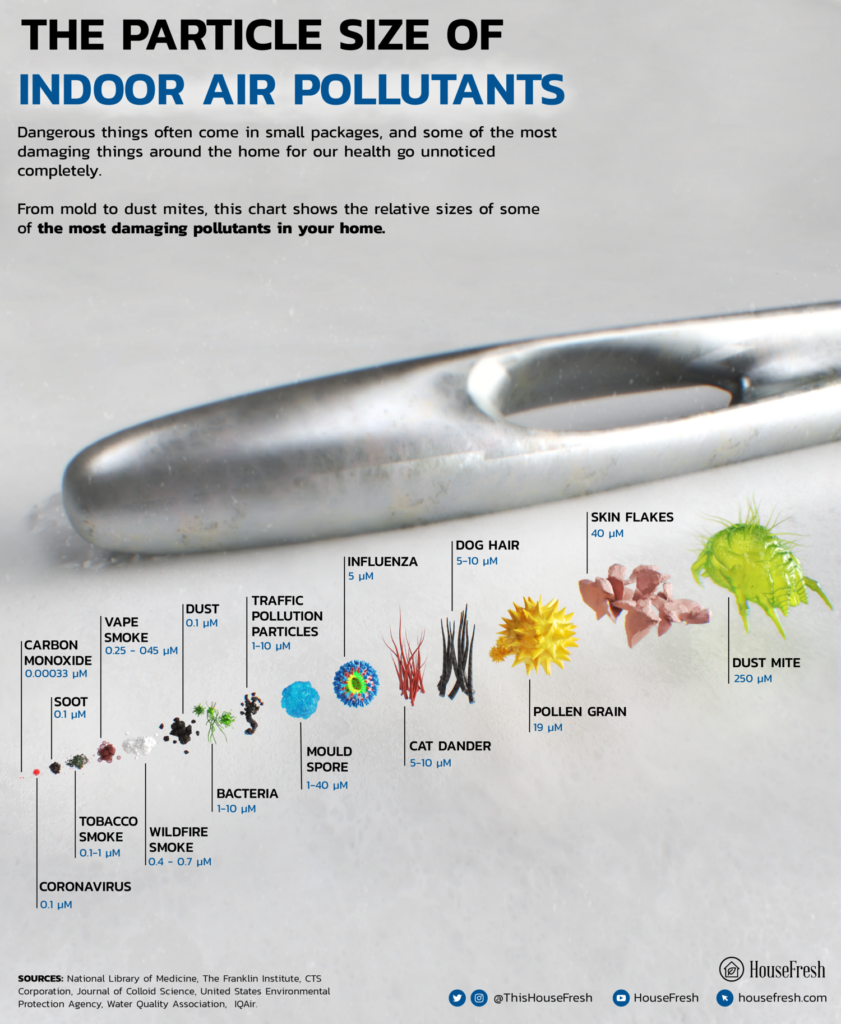PM stands for Particulate Matter, which is a term to refer to microscopic solid or liquid particles suspended in the air.
PM2.5 is used to describe fine particles of 2.5 microns in diameter or less. An inch is about 25,000 microns, so we’re talking really tiny particles here.
To put this into context, human hair has a diameter of 70 micrometers, so that means a PM2.5 particle is 30 times smaller than a strand of human hair. In fact, PM2.5 particles are so tiny that you can only see them under an electron microscope.


Why should you care about PM2.5 particles?
Due to their small size, PM2.5 particles can penetrate your lungs and enter your bloodstream.
The WHO reports that poor indoor air quality has been linked to a range of illnesses, including asthma, pneumonia, lung cancer, chronic obstructive pulmonary disease (COPD) and cardiovascular disease.
PM2.5 can penetrate deep into your lungs and cause serious damage. Particles that land on the lung surface can induce tissue damage and inflammation. Not good at all, particularly for people suffering from pre-existing respiratory conditions.
- One study found that cooking an ommlette in your kitchen at home exposes you to more PM2.5 than standing on a London roadside.
- Children are highly susceptible to particle pollution, as they breathe more air per pound of body weight than grown-ups.
- Research published by the Department of Health in New York State linked PM2.5 exposure to increased respiratory and cardiovascular hospital visits, and long-term exposure may lead to increased chronic bronchitis, reduced lung function and even lung cancer mortality.
- A study published in Frontiers in Endocrinology Breathing found that particulate matter can escalate heart disease and lead to a heart attack.
- Another study found that cooking Thanksgiving dinner could produce more PM2.5 particles than can be found on the streets of Delhi, famously one of the most polluted cities in the world.
- Vacuuming is another source of indoor air pollution unless suitable high-grade filters are used, and mopping with certain cleaning products can also increase the levels of airborne chemicals.
- A study conducted by the Journal of Thoracic Disease showed that the lifespan of an American increased by 0.35 years for every reduction of PM2.5 by 10 µg/m3.
Uncovering the sources of PM2.5
Air pollution rates have risen over the years since the Industrial Revolution, and the inevitable consequence of globalization is a major cause for concern. But it’s not just outside sources of PM2.5 that you should be on the lookout for.





